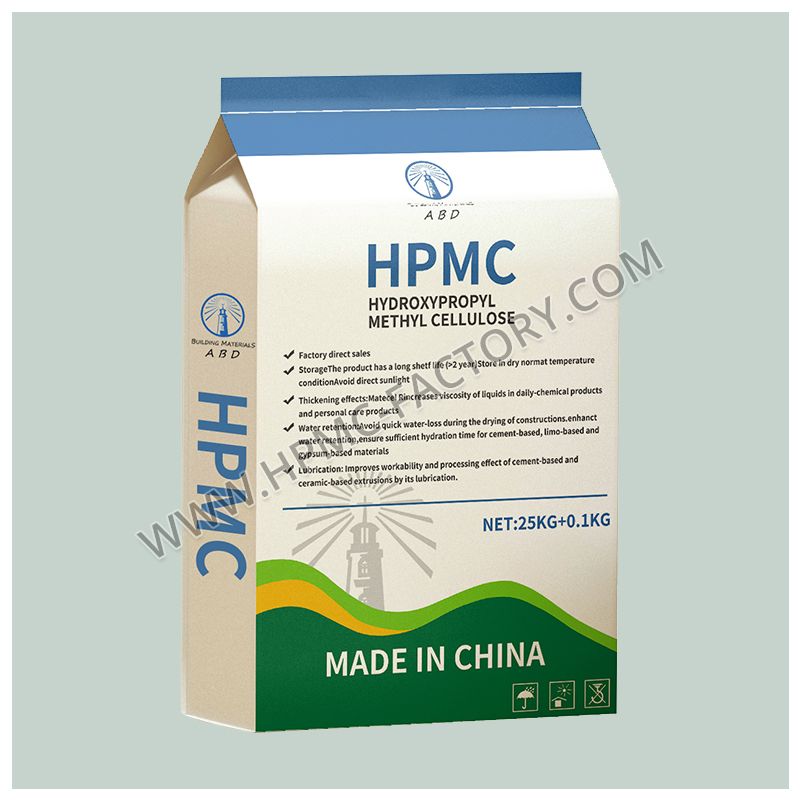Your Position: Home - Chemicals - The Surprising Benefits of Hydroxypropyl Methylcellulose You Never Knew!
In the realm of construction and various industries, Hydroxypropyl Methylcellulose (HPMC) stands as a versatile and indispensable component. Its multifaceted properties contribute significantly to the enhancement of numerous products, yet its benefits often remain concealed from the mainstream discourse. In this comprehensive exploration, we shed light on the surprising advantages of HPMC that you may have never known, showcasing its diverse applications and invaluable contributions.

Hydroxypropyl Methylcellulose emerges as a game-changer in the construction sector. Its unique properties, including high water retention, make it an exceptional additive in cement-based materials. When incorporated into mortars and renders, HPMC improves workability, adhesion, and durability. The result? Structures that withstand the test of time and environmental challenges.
One of the lesser-known benefits of HPMC lies in its ability to refine plastering and finishing processes. By maintaining consistency in mixtures, HPMC ensures smoother application, reduced cracking, and enhanced finish quality. This makes it an indispensable ally for architects and builders striving for excellence in every project.
In the pharmaceutical realm, HPMC plays a pivotal role in revolutionizing drug delivery systems. Its biocompatibility and controlled-release capabilities make it an ideal choice for manufacturing drug formulations. From tablets to capsules, HPMC acts as a stabilizing force, ensuring precise release rates and improved drug efficacy.
The encapsulation of pharmaceutical compounds requires precision and reliability. HPMC excels in this domain by providing a protective shell for active ingredients, safeguarding their potency and enhancing bioavailability. Pharmaceutical innovations owe a debt to the unassuming yet powerful role of HPMC in encapsulation technologies.
Featured content:In the culinary world, HPMC powder serves as a silent champion, transforming the texture and stability of various food products. As a thickening and gelling agent, it contributes to the creation of delectable dishes, from creamy desserts to savory sauces. The versatility of HPMC allows chefs to experiment with textures and presentations, elevating the gastronomic experience for consumers.
Beyond its role in texture enhancement, HPMC proves instrumental in stabilizing food emulsions. Salad dressings, mayonnaise, and other emulsified products benefit from the cohesive properties of HPMC, ensuring a consistent and appealing appearance while prolonging shelf life.
In the pursuit of sustainable practices, HPMC emerges as an unexpected ally. Its biodegradable nature makes it a preferred choice for eco-conscious companies seeking alternatives to traditional packaging materials. HPMC-based films and coatings provide a sustainable solution without compromising on performance, offering a win-win for both businesses and the environment.
In conclusion, the versatile applications of Hydroxypropyl Methylcellulose extend far beyond its conventional use, encompassing construction, pharmaceuticals, food, and environmental sustainability. This unassuming compound proves to be a powerhouse in various industries, contributing to enhanced performance, stability, and eco-friendly practices.
More information please contact Hpmc Manufacturer
Featured content:242
0
0
Comments
All Comments (0)
Related Articles
Introduction to CAS 2381089-83-2 LY3437943 Wholesale high purity
LY3437943 is a triple agonist peptide of the glucagon receptor (GCGR), glucosedependent insulinotropic polypeptide receptor (GIPR), and glucagon-like peptide-1 receptor (GLP-1R). LY3437943 inhibits for human GCGR, GIPR, and GLP-1R with EC50 values of 5.79, 0.0643 and 0.775 nM, respectively.
By CC
300
0
0
What Does Praziquantel Treat in Animals?
Praziquantel, a widely used anthelmintic medication, is a crucial tool in veterinary medicine for treating parasitic infections in animals. It is highly effective in combating a range of internal parasites and plays a significant role in ensuring the health and well-being of our beloved pets.
By CC
280
0
0
5 Uses of Benzocaine
Benzocaine is a local anesthetic that belongs to the ester-type anesthetic class. It is commonly used for its numbing properties, providing relief from pain or discomfort in various applications. Here are five common uses of benzocaine
By Hou
303
0
0
Fine art paper and photo paper: what is the difference?
By Ingrid
265
0
0
What Is The Synthesis And Application of PMK Ethyl Glycidate?
PMK ethyl glycidate, also known as ethyl 3-(1,3-benzodioxol-5-yl)-2-methyloxirane-2-carboxylate, is a key intermediate used in the synthesis of various drugs and chemicals. It is a vital compound in the production of certain pharmaceuticals, perfumes, and flavoring agents. In this article, we will discuss the synthesis and application of PMK ethyl glycidate.
By Ingrid
212
0
0
Comparing Hpmc vs Caulking Gypsum: Which is Superior?
1.
By Geoff
186
0
0
Comparing Hpmc vs Traditional Additives for Etics/Eifs Mortars
When it comes to choosing the right additives for External Thermal Insulation Composite Systems (ETICS) or External Insulation Finishing Systems (EIFS) mortars, contractors and builders are often faced with the decision between traditional additives and newer options like Hydroxypropyl Methylcellulose (HPMC).
By Marina
190
0
0